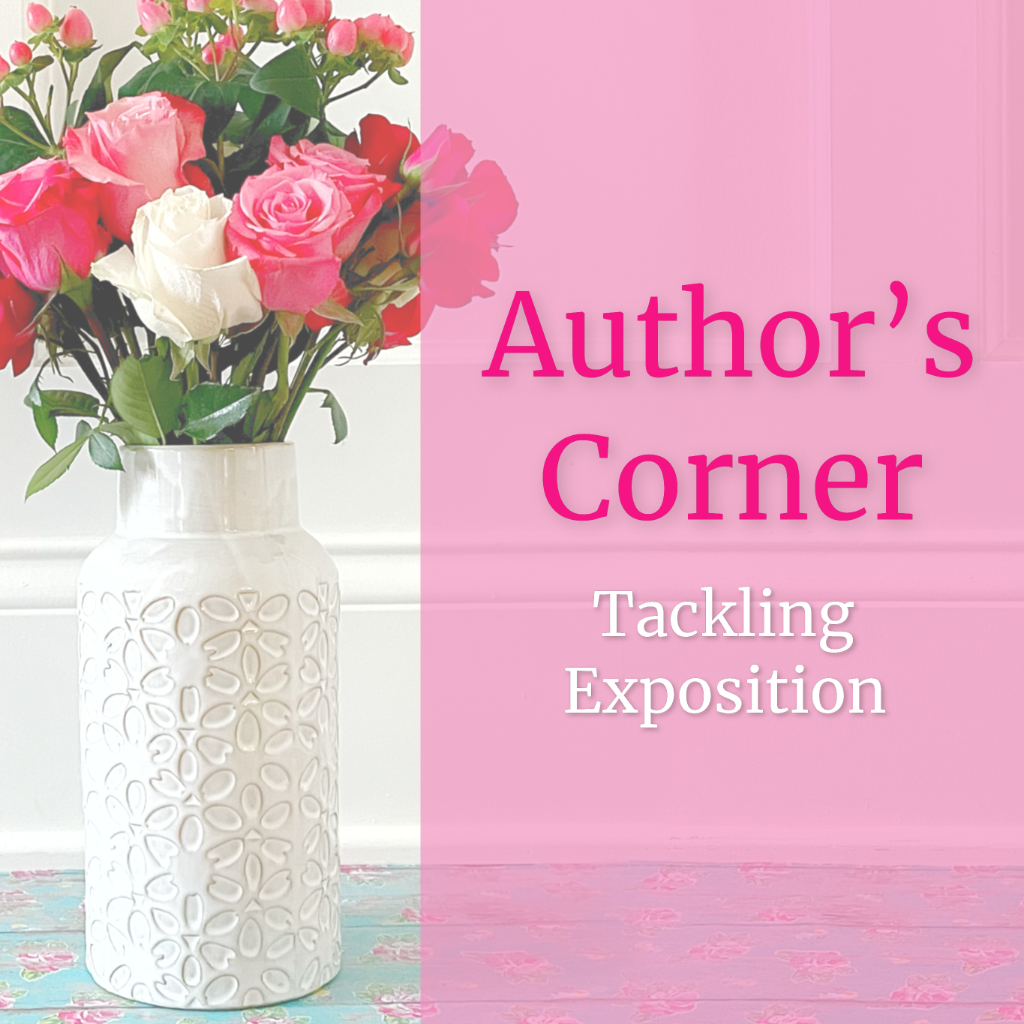Author’s Corner: Tackling Exposition
What is exposition and how can you be sure you’re using it efficiently?
In a nutshell, exposition is the “extra stuff” that you want the reader to know; setting, time of day, backgrounds of the characters... Exposition is necessary to give the reader the details they need to understand the story. However, used incorrectly, it can slow the story way down. So how do you use it efficiently to keep your readers turning pages?
Let’s look at the following example:
“I’m not late, am I?” Anna asked. She was out of breath.
“No, you just made it,” Julie said, smiling at her friend.
Anna had been on her way from her home outside the city to a conference on the other side of town. The traffic had been terrible, and she’d gotten caught up in a back-up that had put her ten minutes behind. And she was the opening speaker. Together, she and Julie walked into the room full of people.
Let’s Assess:
We know a lot about what happened to Anna, but we also had to wade through the story as the events were told to us to learn it.
Have you ever heard that a book is a “page-turner”? Those books are written in a way that keeps the action (or what the characters are actually doing/saying right then) at the forefront. In the example above, the action stops on line two when Julie tells her she’d made it. Less than half of the lines are action. That slows the plot. Let’s color-code the action and the exposition: Action is blue; exposition is pink. See how much exposition there is?
“I’m not late, am I?” Anna asked. She was out of breath.
“No, you just made it,” Julie said, smiling at her friend.
Anna had been on her way from her home outside the city to a conference on the other side of town. The traffic had been terrible, and she’d gotten caught up in a back-up that had put her ten minutes behind. And she was the opening speaker. Together, she and Julie walked into the room full of people.
Let’s revise, tucking away the exposition within the action:
“I’m not late, am I?” Anna asked, out of breath after racing across town to the conference. “It took me ten extra minutes to get here.”
“You just made it.” Her best friend, Julie, patted her shoulder.
“Thank goodness. There was a terrible back-up.” Anxious, Anna paced toward the gathering.
Julie stopped her, squaring her shoulders. “Okay, deep breath. You’re going to be the best opening speaker we’ve ever had. Ready?”
They walked into the room full of people.
Now, let’s assess again:
What did we do with all the exposition? We hid it within the action. A little is fine, because we’re now getting it in much smaller doses and we’re able to watch the scene play out. Let’s color-code the revised version: Action is blue; exposition is pink.
“I’m not late, am I?” Anna asked, out of breath after racing across town to the conference. “It took me ten extra minutes to get here.”
“You just made it.” Her best friend, Julie, patted her shoulder.
“Thank goodness. There was a terrible back-up.” Anxious, Anna paced toward the gathering.
Julie stopped her, squaring her shoulders. “Okay, deep breath. You’re going to be the best opening speaker we’ve ever had. Ready?”
They walked into the room full of people.
That’s how you get your readers turning pages! Now, you can check your own stories to see if there are any opportunities for revision. Happy writing!
© Jenny Hale, 2022

